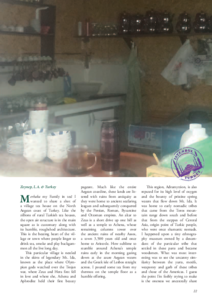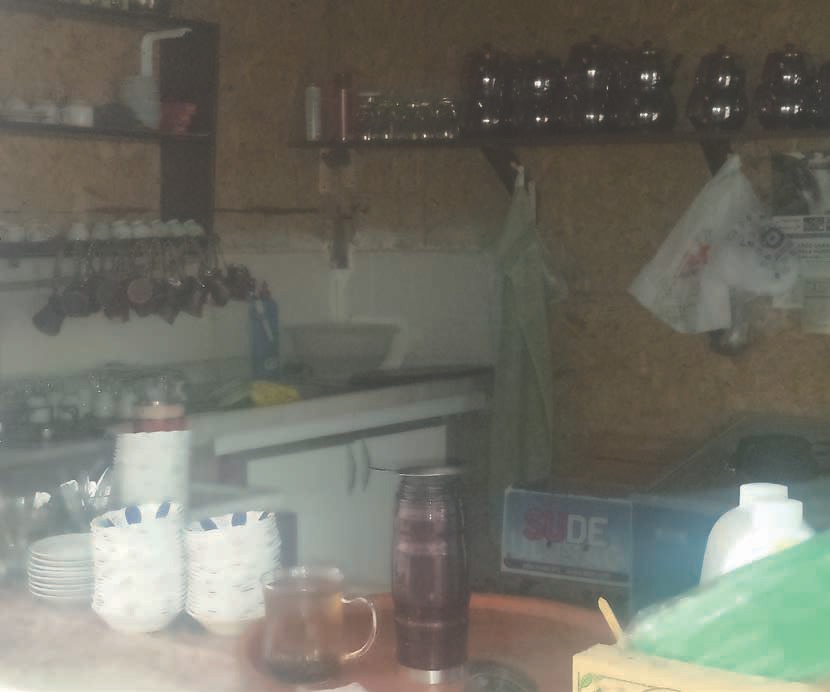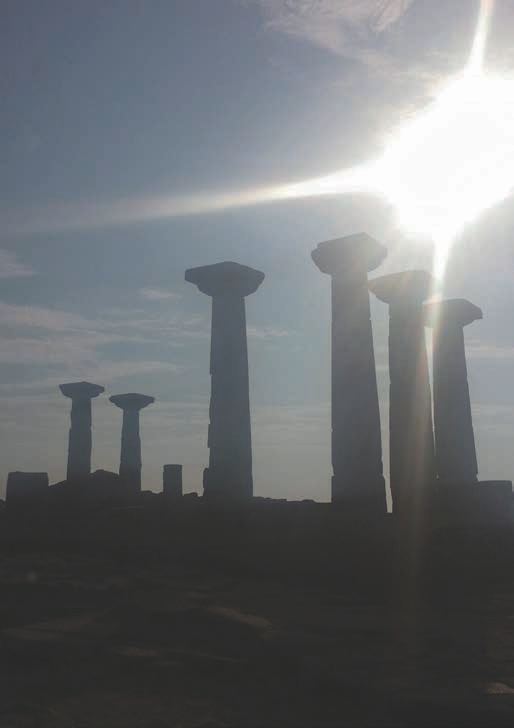
 |
|

Merhaba my Family in tea! I wanted to share a shot of a village tea house on the North Aegean coast of Turkey. Like the zillions of rural Turkish tea houses, the open air structure is in the main square as is customary along with its humble, roughshod architecture. This is the beating heart of the village or town where people linger to drink tea, smoke and play backgammon all the live long day.

This particular village is nestled in the skirts of legendary Mt. Ida, known as the place where Olympian gods watched over the Trojan war, where Zeus and Hera first fell in love and where she, Athena and Aphrodite held their first beauty pageant. Much like the entire Aegean coastline, these lands are littered with ruins from antiquity as they were home to ancient seafaring leagues and subsequently conquered by the Persian, Roman, Byzantine and Ottoman empires. An altar to Zeus is a short drive up one hill as well as a temple to Athena, whose remaining columns tower over the ancient ruins of nearby Assos, a town 3,500 years old and once home to Aristotle. How sublime to stumble around Athena's temple ruins early in the morning gazing down at the azure Aegean waters and the Greek isle of Lesbos straight across. I poured some tea from my thermos on the temple floor as a humble offering.
This region, Adramyttion, is also reputed for its high level of oxygen and the bounty of pristine spring waters that flow down Mt. Ida. It was home to early nomadic tribes that came from the Toros mountain range down south and before that from the steppes of Central Asia, origin point of Turkic people, who were once shamanic nomads. I happened upon a tiny ethnography museum owned by a descendant of the particular tribe that settled in these parts and became woodsmen. What was most interesting was to see the uncanny similarity between the yurts, motifs, weaponry and garb of these tribes and those of the Americas. I guess the point I'm feebly trying to make is the oneness we ancestrally share from the farthest reaches of Mongolia down to the Latin Americas and everywhere in between!
The rainy, deeply forested ranges of the Black Sea region, that stretches horizontally across northern Turkey from the Eastern Marmara Sea to the Caucasus mountains, is where tea is sourced. The Black Sea port city of Rize is the main center of production, hence the common name for Turkish tea: Rize cay. It doesn't compare to the plethora of living teas we drink in Global Tea Hut, insofar as diversity, medicinal powers, rich liquors or purity of harvesting. Nor do the aluminum double boilers that sit on stoves all day compare to the exquisite finery of Asian clay kettles and pots, yet the intentions remain similar: that of brotherhood, bonding and sipping like there's no tomorrow.
To brew tea, water is placed in the bottom of a double boiler and leaves on top. Once the water boils, the leaves are steeped and off it goes, brewing for hours. It's served with two sugar cubes in a glass tulip shaped cup, which is first filled with the brew then topped off with hot water. You request it either "dark" or "light" namely how much brew to water you want. It's a red tea and a quality cup is referred to as "rabbit's blood": Our twisted way of describing the crimson color, I guess, and its strength.
Though not much of a picture, if you look on the previous page, you'll be amused to see my trustworthy glass cup and thermos on the counter as I waited for this particular tea garden proprietor to provide me hot water to brew a roasted oolong. That was a succor for the two weeks I was there. I carried that thermos around like a pacifier, grateful I didn't ditch it in antiquity ruins and then in the chaos of Istanbul. Once one has tasted old-growth tea, there ain't no going back, even though I alternated between it, Rize cay and (gasp!) coffee.
Turkish coffee schmawfee! Turks drink more tea than the day is long. Tea gardens pepper every square. Wherever there's a business, there's a tea hut a stone's throw away. Young men march up and down the streets defying all laws of spillage as they swing dozens of glass cups on a tray peddling tea to any and all around the clock.
My own glass cup and strainer created quite a stir especially on airplanes, with one hostess stopping to remark how wonderful the oolong smelled. Another gushed at how cute my "kit" was and "what is it?" Waiters I came to know would see me approaching with my rattling "kit" in hand and quietly go to get me hot water. It was like an unspoken understanding of shy curiosity and service. I left a small amount of change on this tea hut owner's counter for providing me water so early in the morning and upon realizing it he marched over and tossed the money through the car window as I was discreetly trying to pull away.
This is the thing I love about tea culture: its ancient, global, communal and its an offering no matter what form it comes in, even if it's hot water for oolong.
Thank you for reading and letting me share a bit of my background. I am so grateful for the fabulous monthly envelopes - not only for the wisdom contained in the magazine, but the experience of precious leaves that I know will last a lifetime, and also for the delightful gifts that are often made by members around the world. What a gift Global Tea Hut is, unifying and enriching us all around the globe!

